Lose weight safely with our 90-day guide on how to lose 15 kg in 3 months. No extreme diets — just balance, energy, and lasting results.
Losing 15 kg in 3 months may sound ambitious, but it’s absolutely possible with the right game plan—and no, it doesn’t involve starving yourself or living on celery sticks.
According to the CDC, a safe and sustainable rate of weight loss, calculated by the number of calories consumed, is about 0.5–1 kg per week, which adds up perfectly to your 90-day goal.
This guide breaks down everything you need: a realistic diet plan, an exercise routine you can actually stick to, and smart lifestyle changes that support weight loss. Ready to get started? Let’s do this—without the stress.
Why 90 Days Is the Right Timeframe for Weight Loss
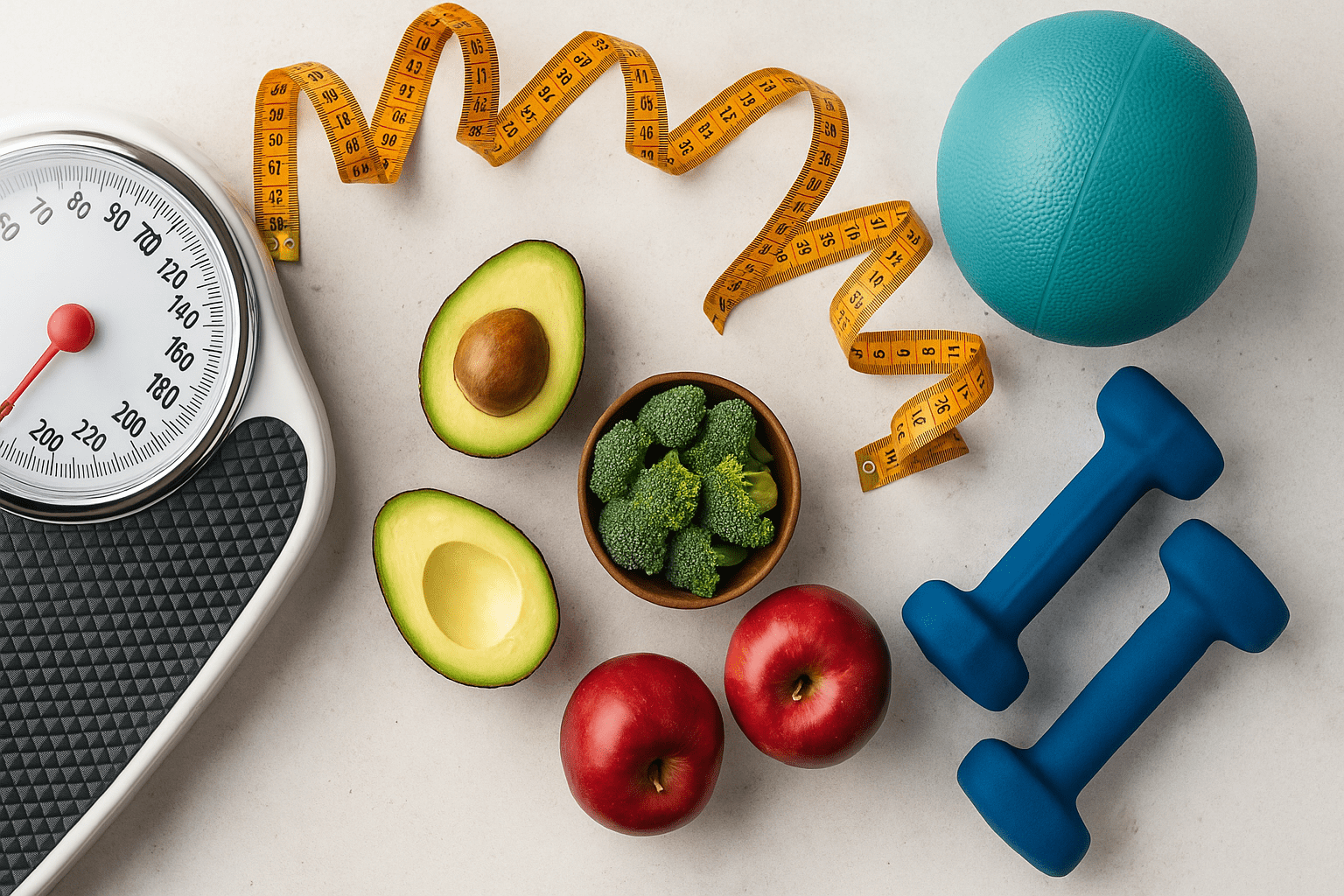
Ninety days is long enough for your body to adapt and short enough to keep you motivated. If you’re aiming for how to lose 15 kg in 3 months, this timeframe makes sense because it gives room for steady progress.
Instead of relying on rapid weight loss methods that can harm your health, 90 days allows you to build a balanced diet, regular exercise routine, and lifestyle changes by reducing calorie intake that support weight loss in a healthy manner. It’s a realistic, safe, and sustainable approach.
How much weight can you lose safely in 3 months?
Health experts recommend losing 0.5–1 kg per week, which equals 6–12 kg in 3 months. With careful calorie deficit, portion control, and physical activity, some people can safely reach close to 15 kg.
The CDC notes, “slow and steady weight loss is more likely to last long term.” This means focusing on fat loss, protecting lean muscle mass, and improving overall health instead of quick fixes.
The difference between healthy weight loss and rapid weight loss
| Aspect | Healthy Weight Loss | Rapid Weight Loss |
|---|---|---|
| Rate | 0.5–1 kg per week (sustainable pace) | More than 2–3 kg per week (too fast) |
| Method | Balanced diet + regular exercise | Extreme diets, fasting, or over-exercising |
| Impact on Body | Preserves muscle, burns fat | Often causes muscle loss, dehydration |
| Health Effects | Improves energy, mood, and long-term health | Risk of nutrient deficiencies, fatigue, gallstones |
| Sustainability | Easy to maintain over time | Hard to maintain, weight often rebounds |
Understanding the Basics: What Happens When You Lose 15 kg
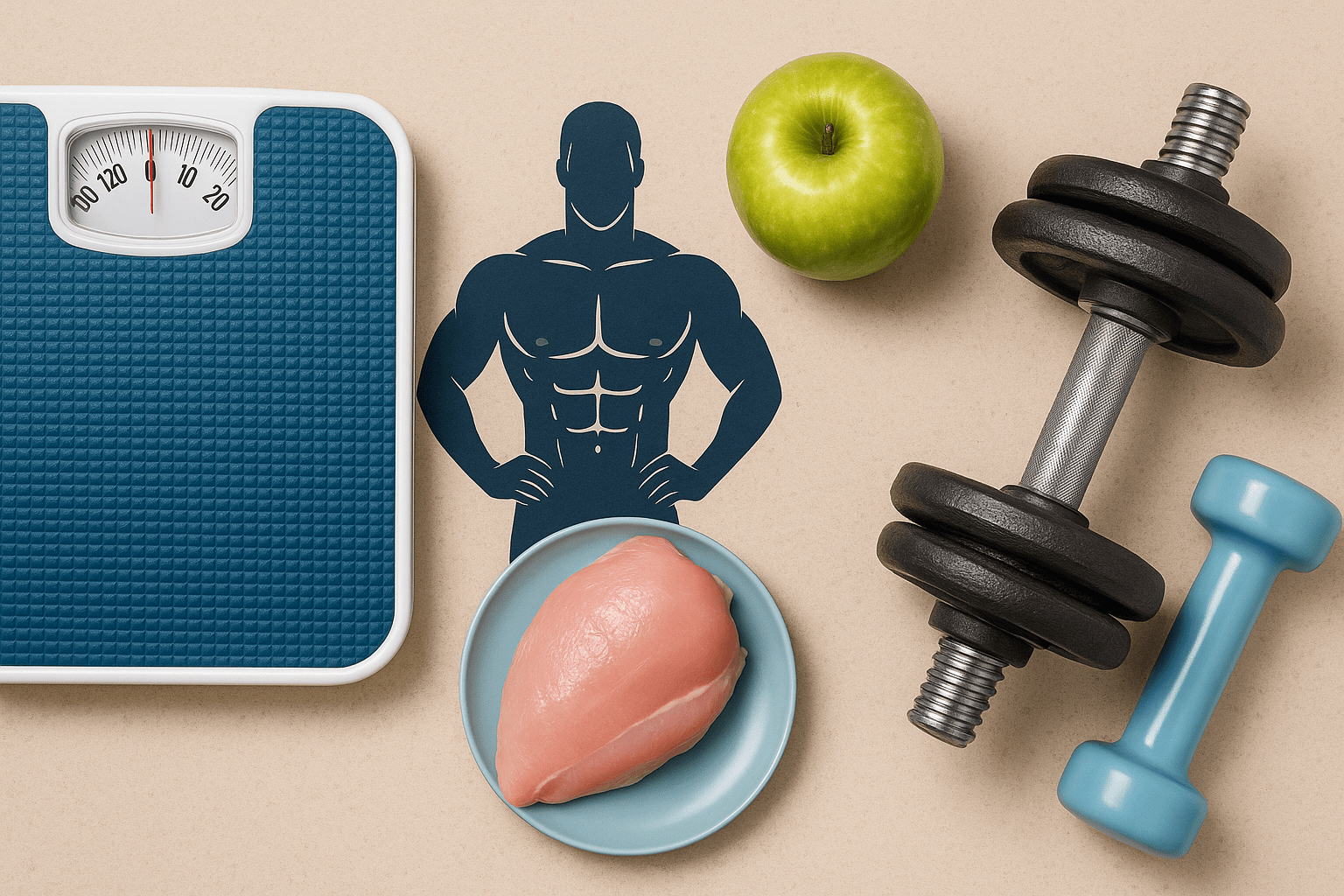
Losing 15 kg is more than just seeing the scale drop. When you start a weight loss journey, your body uses stored body fat as energy. At the same time, you want to protect lean muscle mass through strength training and eating lean protein.
If you rely only on extreme diets, you may risk muscle loss, low energy, or health problems. That’s why experts recommend aiming for steady fat loss through a balanced diet and regular exercise.
According to the CDC, “healthy weight loss means 0.5–1 kg per week,” which is safe and realistic for your 90-day goal.
How Calorie Intake and Calorie Deficit Drive Results
To know how to lose 15 kg in 3 months, you must understand calories. Calories are the energy your body gets from food. If you eat more calories than you burn, you gain weight. If you eat fewer calories, you create a calorie deficit, which leads to fat loss.
Here’s how it works in practice:
-
Track daily caloric intake: Know how many calories your body needs.
-
Create a calorie deficit: Eat fewer calories but keep nutrition balanced.
-
Burn calories with exercise: Combine cardio and resistance training to speed fat loss.
-
Choose healthy foods: Whole grains, vegetables, and lean protein help support weight loss efforts.
Think of it this way: a small, steady calorie deficit each day can help you reach your target weight without stress or rebound weight gain.
"Not sure how to plan your next meal? Balance Bite creates customized meal plans designed for real results, not quick fixes. Get a plan that fits your lifestyle."
4 Proven Steps to Lose 15 kg in 3 Months: Diet, Exercise, Tracking & Healthy Lifestyle
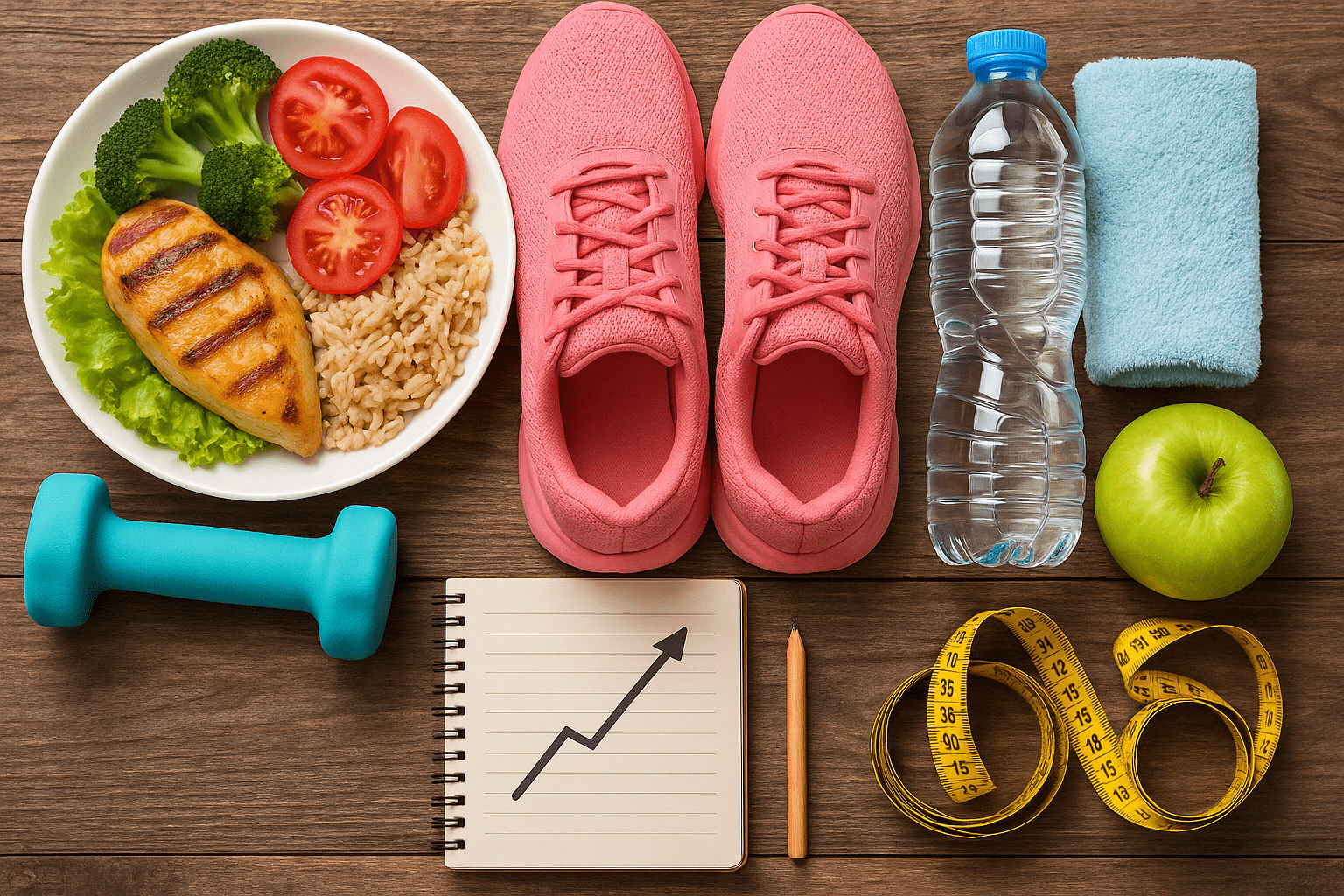
Step 1: Building a Healthy Diet Plan That Works
Your diet is the biggest part of weight loss. Creating a calorie deficit by consuming fewer calories than you burn is the essential method to shed body fat. But deficit doesn’t mean starvation—it means choosing smart foods.
-
Eat more lean protein: chicken breast, cottage cheese, eggs. These protect muscle mass while you lose fat.
-
Add whole grains and vegetables: brown rice, oats, beans, and fresh veggies keep you full.
-
Avoid processed foods and sugary drinks: they add more calories without nutrition.
-
Practice portion control: smaller portion sizes prevent weight gain and support weight loss efforts.
A balanced diet gives your body the energy to move, exercise, and stay healthy while dropping kilos.
"Tired of boring salads? Balance Bite offers dietitian-approved recipes that are easy, tasty, and family-friendly. Eat better without feeling restricted."
Step 2: Exercise Routine to Burn Calories and Build Muscle
Diet alone won’t get you all the way. Exercise plays a key role in burning calories and building lean muscle mass, which accelerates fat loss.
-
Cardio workouts: walking, jogging, or cycling help you burn fat and improve overall health.
-
Strength training: push ups, squats, and resistance training protect your muscles while in a calorie deficit. Strength training is not only about burning calories—it’s also about building muscle, which helps you keep the weight off long term.
-
High Intensity Interval Training (HIIT): short, intense bursts burn fat fast and boost calorie burn even after workouts.
-
Consistency matters: aim for at least 150 minutes of moderate intensity exercise each week.
As Dr. Donald Hensrud of Mayo Clinic notes, “The best weight loss plan combines healthy eating with regular physical activity.” Following this approach keeps you on track toward your target weight without stress.
Step 3: Tracking Your Caloric Intake and Daily Progress
If you want to know how to lose 15 kg in 3 months, tracking your calorie intake is non-negotiable. Most people eat more calories than they realize. Even “healthy” snacks can add up fast. A small chocolate bar may have 250 calories—that’s equal to a 30-minute jog.
So, how do you stay on track?
-
Use an app or food diary: Write down every meal, snack, and drink.
-
Check portion sizes: Eating a little less rice or bread can reduce hundreds of calories.
-
Watch liquid calories: Sugary drinks and packaged juices can stall fat loss. Plan your next meal in advance so you don’t grab junk food when hunger strikes.
-
Track workouts too: Count calories burned from strength training, cardio, or HIIT.
According to Harvard Health, “keeping a food log can double your chances of losing weight.” Monitoring daily progress helps you create a consistent calorie deficit, which is the only way to lose fat while protecting lean muscle mass.
"Balance Bite’s tools help you track calories, portion sizes, and weight loss goals—so you don’t have to guess.”
Step 4: Mindset and Lifestyle Changes That Support Weight Loss
Losing weight isn’t just about diet and exercise. Your mindset and lifestyle choices make the biggest difference in the long run. Without them, it’s easy to slip back into old habits and regain weight.
Here’s what works:
-
Stay motivated: Set small weekly goals and celebrate progress.
-
Get enough sleep: Poor sleep raises hunger hormones and slows fat loss.
-
Manage stress: Stress can trigger overeating and weight gain. Practice simple breathing or walking breaks.
-
Avoid junk food at home: If it’s not in your kitchen, you won’t eat it.
-
Drink plenty of water: It reduces cravings and supports healthy weight loss.
Experts agree that lifestyle changes lead to long-term success. The CDC highlights that “healthy weight loss requires permanent changes in daily habits.” That means focusing on building a healthy routine, not chasing rapid weight loss tricks.
“Crash diets fail because they don’t teach habits. Balance Bite guides you to make sustainable lifestyle changes that support weight loss for life.”
90-Day Game Plan: Weekly Roadmap to Lose 15 kg in 3 Months
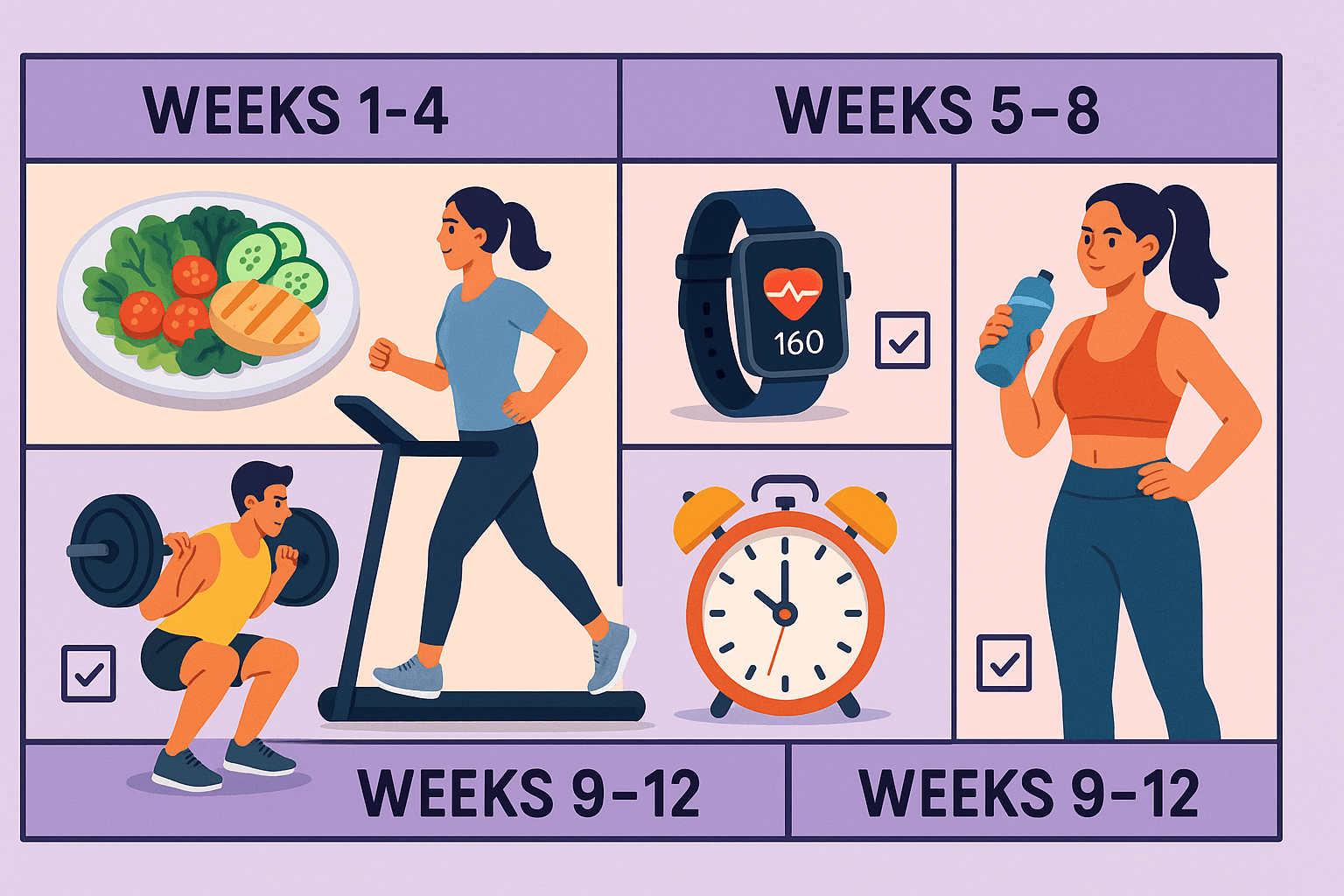
Week 1–4: Kickstart your fat loss with portion control and diet adjustments
The first month is about setting a strong foundation. If you’re serious about how to lose 15 kg in 3 months, you need to start with simple, doable changes.
Here’s what to do in Weeks 1–4:
-
Follow a portion control diet plan: Use smaller plates to keep portion sizes in check.
-
Replace processed foods and sugary drinks with whole grains, vegetables, and lean protein.
-
Eat more often, but smaller meals: This keeps your energy up while creating a calorie deficit.
-
Stay hydrated: Drinking plenty of water helps control hunger and supports weight loss efforts.
-
Add light exercise: Daily walks or moderate intensity exercise help burn calories and speed fat loss.
Everyday meals you can try:
-
Breakfast: 2 boiled eggs with brown rice or oats or vegetable upma made with whole grains.
-
Lunch: Grilled chicken breast or cottage cheese with whole grains and veggies.
-
Dinner: Stir-fried vegetables with lean protein or baked salmon with sweet potatoes and broccoli.
-
Snacks: Fresh fruit, nuts, or yogurt (avoid junk food and sugary drinks)
Week 5–8: Increase physical activity, add strength training and HIIT
By Week 5, your body is ready for the next step. If you’re serious about how to lose 15 kg in 3 months, this stage is where results get faster. You already built the habit of portion control and clean eating. Now, you need to burn more calories, build muscle mass, and speed up fat loss.
During Weeks 5–8, focus on:
-
Strength training: Add push ups, squats, and resistance training three times a week. This protects lean muscle and improves metabolism.
-
High Intensity Interval Training (HIIT): Short bursts of cardio, like sprinting or jump rope, followed by rest. HIIT is proven to burn fat quickly and increase calorie deficit.
-
Mix it up: Do moderate intensity exercise on other days—like brisk walking, cycling, or swimming.
-
Track your calories: Keep checking your caloric intake so you don’t undo your weight loss efforts.
Everyday meals still matter here. Stick to your balanced diet with lean protein, whole grains, and fewer processed foods.
Sample Meals for Week 5–8:
-
Breakfast: Oats with chia seeds and fruit, or 2 boiled eggs with whole grain toast
-
Lunch: Grilled chicken breast or cottage cheese with brown rice and salad
-
Dinner: Baked fish with steamed broccoli, or vegetable curry with whole grain roti
-
Snacks: Roasted chickpeas, nuts, or low-fat yogurt (avoid sugary drinks and junk food)
Week 9–12: Push towards your weight loss goals and maintain lean muscle
By the last month, you’re close to your goal. If you’ve followed the plan so far, you’ve already built strong habits. Now, it’s time to push harder, burn fat, and protect lean muscle mass. This is the stage that decides if you actually reach the full 15 kg weight loss target.
During Weeks 9–12, focus on:
-
Increase workout intensity: Add more HIIT sessions and longer strength training routines.
-
Build muscle mass: Use resistance training like push ups, squats, or light weights. More muscle helps burn calories even at rest.
-
Stick to your calorie deficit: Track every meal and avoid overeating, even on weekends.
-
Stay consistent: Don’t relax too early. These final weeks are crucial for long-term success.
Everyday meal options for Week 9–12:
-
Breakfast: Vegetable omelet with whole grain toast, or oats with chia seeds and nuts
-
Lunch: Grilled chicken breast or fish with brown rice and a side of salad
-
Dinner: Cottage cheese curry with roti, or baked salmon with steamed greens
-
Snacks: Roasted chickpeas, fresh fruit, or yogurt (avoid sugary drinks and junk food)
According to the National Institutes of Health (NIH), “combining resistance training with diet changes is the best way to reduce body fat while maintaining muscle.” This ensures you don’t just lose weight quickly, but you also keep a healthy weight after 90 days.
Keep going strong. By the end of Week 12, you’ll not only know how to lose 15 kg in 3 months, but also how to maintain it in a healthy way.
Common Mistakes That Can Lead to Weight Gain Instead of Fat Loss
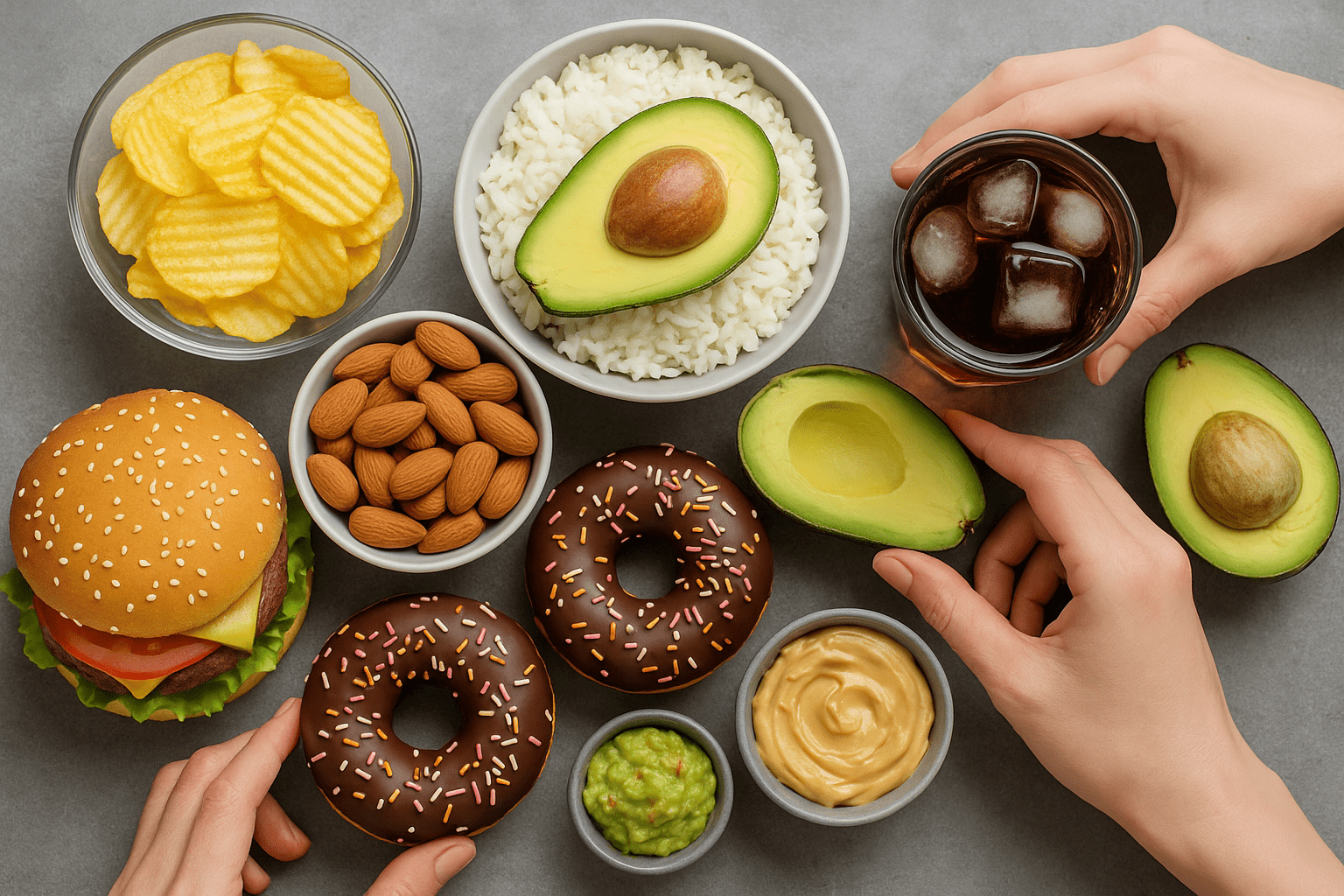
-
Eating “Healthy” Foods in Large Portions: Foods like nuts, brown rice, or avocado are healthy, but too much adds extra calories. Even a small extra portion can stop a calorie deficit. Use portion control to keep your daily calories intake balanced.
-
Skipping Meals to Cut Calories: Skipping meals may look like a shortcut, but it often leads to overeating later. It slows your metabolism and makes you crave junk food. Instead, eat small, balanced meals that support weight loss.
-
Focusing Only on Rapid Weight Loss Hacks: Extreme diets and “lose weight fast” programs may cut weight quickly, but most of it is water and muscle mass. Rapid weight loss often leads to rebound weight gain. Aim for steady fat loss through a balanced diet and exercise routine.
-
Drinking Hidden Calories: Sugary drinks, flavored coffees, and packaged juices add more calories than you think. Replace them with water, green tea, or lemon water to support weight loss efforts.

-
Ignoring Exercise or Doing Only Cardio: Cardio helps you burn calories, but strength training and resistance training are just as important. Building lean muscle mass boosts metabolism and makes fat loss easier.
-
Underestimating Processed Foods: Processed foods labeled “low fat” or “diet” are often filled with sugar and salt. They slow down healthy weight loss. Stick with whole grains, lean protein, and vegetables.
-
Not Tracking Calorie Intake Properly: Many people underestimate how much they eat. According to Harvard Health, food tracking can double your chances of success. Use an app or a simple diary to track caloric intake daily.
-
Stress and Lack of Sleep: High stress raises cortisol, a hormone that can cause fat storage around the belly. Poor sleep also increases hunger hormones, making you eat more calories. Stress management and good sleep are part of a healthy lifestyle
Workout Plan for Your Weight Loss Journey

-
Start with a Full-Body Exercise Routine: Begin with simple moves that work your whole body. Squats, push ups, and planks are great examples. These exercises burn calories and improve body weight strength. Doing full-body workouts three times a week will kickstart fat loss.
-
Mix Cardio with Strength Training: Cardio like walking, cycling, or swimming helps you burn fat. Strength training protects your lean muscle mass. When you combine both, you speed up fat loss while keeping your body strong. Aim for 30 minutes of cardio and 20 minutes of strength training in one session.
-
Add High Intensity Interval Training (HIIT) Twice a Week: HIIT means short bursts of intense exercise followed by rest. For example, 30 seconds of sprinting, then 60 seconds of walking. HIIT is one of the fastest ways to burn fat and support weight loss efforts. Just two sessions per week can make a big difference.
-
Include Resistance Training for Lean Muscle: Use resistance bands, light weights, or even your own body weight. Resistance training helps build lean muscle, which boosts metabolism. More muscle means you burn more calories even when resting.
-
Keep Your Daily Routine Active: Exercise is not just about the gym. Take the stairs instead of the elevator. Walk after meals. Add small physical activity into your daily routine. These lifestyle changes support long-term success and help you reach your target weight.
With this workout plan, you’ll not only burn calories but also protect your muscle mass. That’s the smart way to achieve healthy weight loss and keep it off for good.
When to Seek Professional Medical Advice

Losing weight can feel exciting, but safety comes first. If you want to know how to lose 15 kg in 3 months, remember that every body is different. Sometimes, you may need help from a doctor, dietitian, or certified personal trainer. Here’s when to ask for professional medical advice.
-
If You Experience Health Problems During Weight Loss: If you feel dizzy, extremely tired, or have chest pain, stop right away. These may be signs that your calorie deficit is too high or your exercise routine is unsafe. A doctor can check if your plan is right for your body.
-
When Rapid Weight Loss Feels Unsafe: Losing more than 2–3 kg per week is not healthy weight loss. Rapid weight loss often leads to muscle mass loss and other health problems. Experts like the CDC recommend 0.5–1 kg per week as safe.
-
If You Have Pre-Existing Conditions: People with diabetes, thyroid issues, or heart disease should always talk to a doctor before starting a diet plan. Medical advice helps you avoid risks while still working toward your target weight.
-
When You’re Unsure About Caloric Intake: Not sure how many calories you should eat daily? A nutritionist can set your ideal caloric intake so you lose fat without harming your overall health.
-
If Weight Gain Happens Despite Efforts: Sometimes you eat less and exercise more, but still gain weight. This could mean hormonal imbalance or another hidden issue. Professional testing can give answers.
-
Before Starting a High-Intensity Workout Plan: HIIT and resistance training are powerful, but they may not be safe for beginners. A certified personal trainer can guide you step by step, so you build lean muscle safely without injury.
Final Note
If you’re aiming for how to lose 15 kg in 3 months, remember that success comes from balance, not shortcuts.
A good meal plan, smart workouts, and simple lifestyle changes make all the difference. Don’t fall for “lose weight fast” tricks. Focus instead on steady fat loss with portion control, healthy foods, and whole grains.
Your weight loss goals should be realistic. Track your caloric intake, eat fewer calories, and avoid eating too much—even when it’s healthy food. Add resistance training, cardio, and even small moves like push ups to protect muscle.
Stay consistent, drink plenty of water, and make healthy options part of your daily routine. As the CDC says, “slow and steady weight loss is more likely to last long term.” With focus and patience, you’ll not only reach your ideal weight, but also keep it in a healthy way.
“If you’re serious about how to lose 15 kg in 3 months, don’t do it alone. Let Balance Bite support you with expert plans, smart tracking, and real accountability.”




















Leave a comment
Translation missing: en.blogs.comments.discription